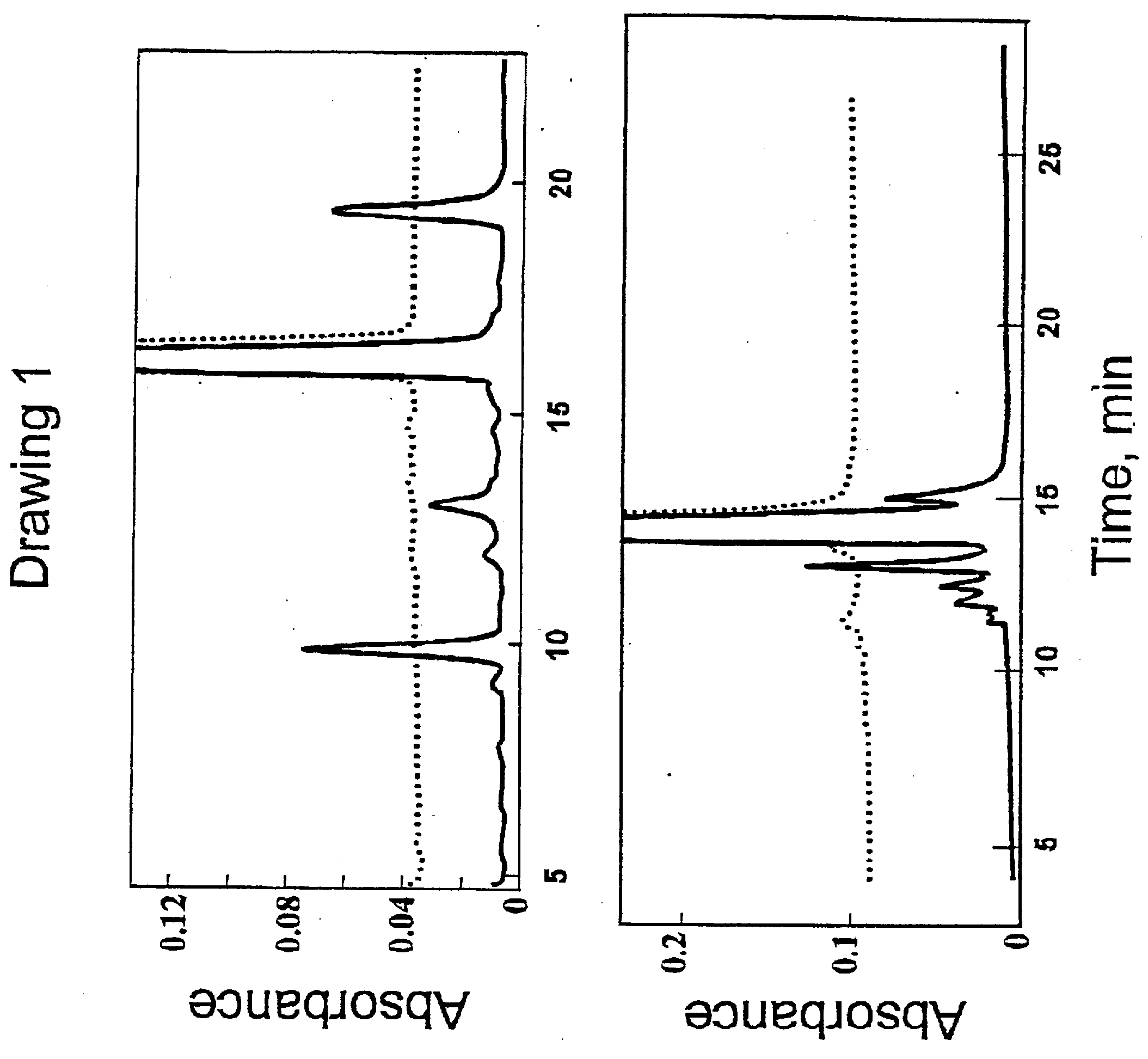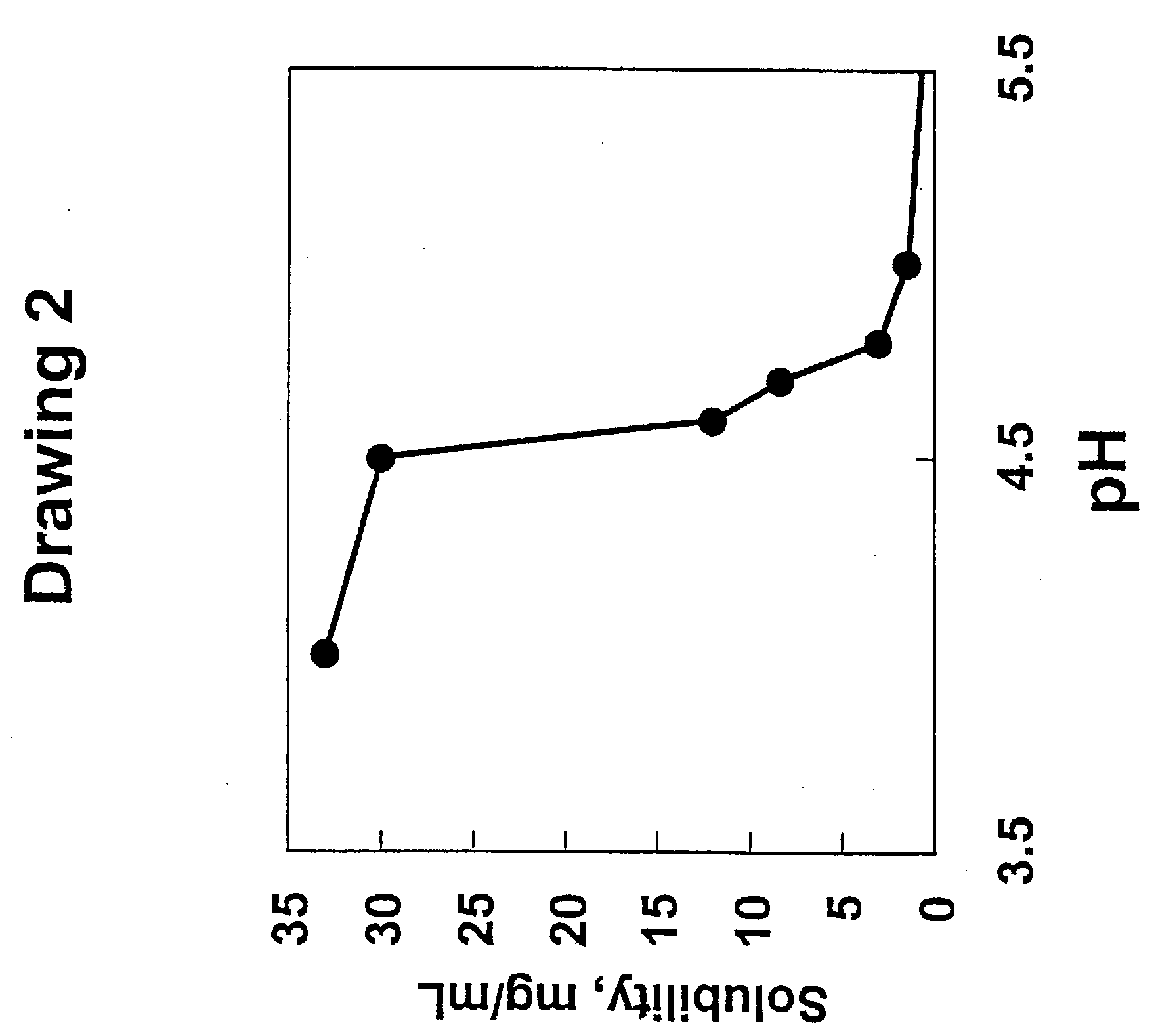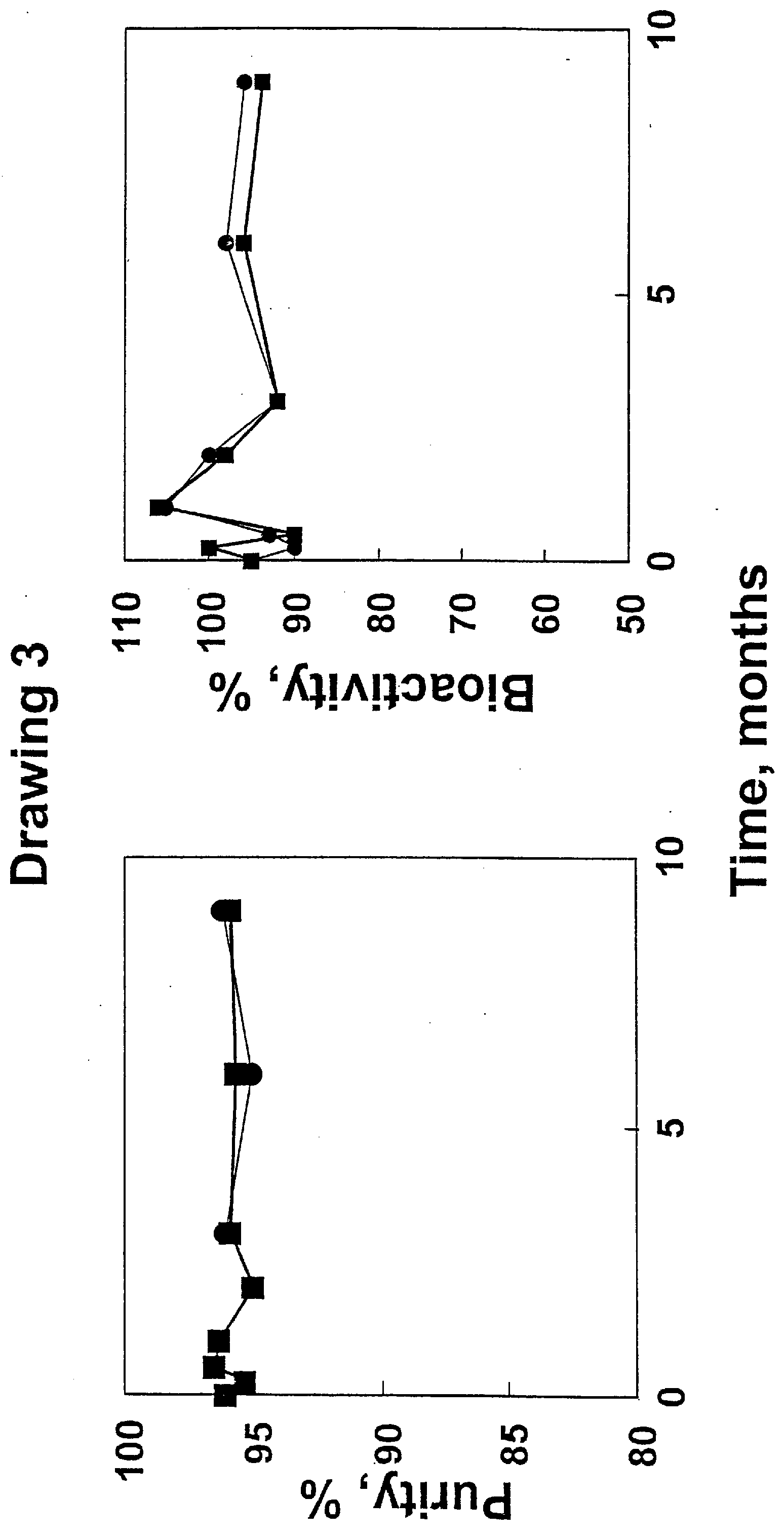Peptide pharmaceutical formulations
a technology of peptides and pharmaceutical formulations, applied in the field of pharmaceutical formulations of peptides, can solve the problems of difficult to make stable soluble peptide formulations, and unstable ph values of adjuvants, such as albumin, to achieve good stability of peptides
- Summary
- Abstract
- Description
- Claims
- Application Information
AI Technical Summary
Benefits of technology
Problems solved by technology
Method used
Image
Examples
example 1
[0084] GLP-1, PTH, and GRF, as their chloride salts, were dissolved in the formulation at the pH values indicated in Table 1, vialed in 1 mL tubing glass vials and stoppered with Helvoet Omniflex stoppers and metal crimp seals (SP Pharmaceuticals, NM). The vials were stored at the indicated temperatures for the indicated times. Samples were removed and assayed for the loss of parent peptide by HPLC, using a reversed phase C18 (1×15 cm) analytical column. Samples (10 μl) were injected directly and resolved with a gradient of acetonitrile in water, in the presence of 0.1% trifluoroacetic acid. Percent peptide remaining at the times indicated was calculated as the area of the intact peptide divided by the total area of the intact peptide plus that of the decomposition products times 100.
TABLE 1Stability of GLP-1, PTH, and GRF in the preferredformulation as a function of time and temperature.Concen-Percent peptide remainingFormulationtration4° C.25° C.37° C.50° C.GLP-1; 101 mg / mL,9998...
example 2
[0085] The stability of GRF(1-44)amide was investigated in various formulations. GRF(1-44)amide was formulated as listed in Table 2 and the purity after 7 days at various temperatures was measured using a Beckman HPLC commercially available from Beckman Instruments, CA, using a reversed phase C 18 analytical column with a gradient of increasing acetonitrile in water, in the presence of 0.1% trifluoroacetic acid.
TABLE 2GRF solubility / stability in formulations after storage at 4° C.,25° C., and 50° C. for 7 days at 4 mg / mL.Formulation4° C.25° C.50° C.A.Water, pH 2.999%99%63%B.10 mM acetate, 10% (w / v) lactose,999879pH 4.8C.10 mM bicarbonate, 10% (w / v) lactose,997434pH 7.5D.unbuffered, 10% (w / v) lactose, pH 2.9999659E.10 mM acetate, 5.07% (w / v) D-999989mannitol, pH 4.7F.10 mM bicarbonate, 5.07% (w / v) D-999342mannitol, pH 7.7G.unbuffered, 5.07% (w / v) D-mannitol,999763pH 2.9H.10 mM acetate, 2% (w / v) D-trehalose,999988pH 4.7I.10 mM bicarbonate, 2% (w / v) D-989239trehalose, pH 7.7J.unbuffe...
example 3
Long-Term Stability in the Preferred Embodiment
[0088] GLP-1, GRF, and PTH were formulated at SP Pharmaceuticals under cGMP guidelines in 10 mM acetate, 5.07% D-mannitol in 3 mL glass vials with Helvoet stoppers and metal seals. The vials containing 1 mL of formulated drug were put into thermostatted chambers and assayed for % peptide remaining as a function of time after storage at different temperatures. Bioactivity of the formulations at the time points was also measured.
[0089] Drawings 3, 4, and 5 show results that demonstrate that the formulations are highly stable for at least 9 months at −20° C. and 4° C. as assessed by decomposition (measured by HPLC) and / or bioactivity. GLP-1 formulation stability data is presented in Drawing 4 and PTH formulation stability data is shown in Drawing 5.
[0090] The bioactivity of PTH was determined by the chick hypercalcemia assay of Parsons et al., Endocrinology 92, 454 (1973). GLP-I bioactivity was measured using the transformed human kidne...
PUM
| Property | Measurement | Unit |
|---|---|---|
| Temperature | aaaaa | aaaaa |
| Temperature | aaaaa | aaaaa |
| Molar density | aaaaa | aaaaa |
Abstract
Description
Claims
Application Information
 Login to View More
Login to View More - R&D
- Intellectual Property
- Life Sciences
- Materials
- Tech Scout
- Unparalleled Data Quality
- Higher Quality Content
- 60% Fewer Hallucinations
Browse by: Latest US Patents, China's latest patents, Technical Efficacy Thesaurus, Application Domain, Technology Topic, Popular Technical Reports.
© 2025 PatSnap. All rights reserved.Legal|Privacy policy|Modern Slavery Act Transparency Statement|Sitemap|About US| Contact US: help@patsnap.com



